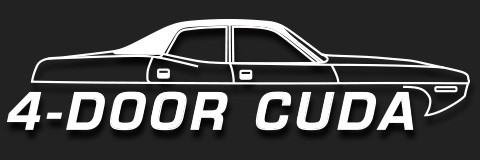Pictured below is another 4 Door Concept vehicle (pictured in the center, right portion of the photo) that never made it into mass production. It is an XP-836 also know as the Chevrolet Camaro. As stated on many occasions, every Auto Manufacturer was making 4 Door Concepts of their “sporty” 2 Door production vehicles. Some have asked how our Concept Tribute will be unveiled to the Public when complete. It will be presented exactly the way it has been written about since its introduction. After completing 3 OE Gold and Best of Show vehicles at the Mopar Nationals, I decided it was time to do something different. I came across an Artist’s rendering of a light blue-gray painting of a 1970 4 Door Barracuda and decided to build one. It was originally going to be a lemon twist yellow car with a Gator Grain Top and a Rally Hood. A few weeks into the project, we came across an article that was written by Roger Johnson in 2007. He wrote about a Red 1970 4 Door Barracuda Concept Car that he saw while working at Chrysler’s Corporate Headquarters in 1969. It was at that time that I decided to change the direction of the project and do a “What If” scenario based on Roger Johnson’s article. The car would be built to match his recollection but with an added twist. It will be built as if Chrysler had given the “Okay” to manufacture a production vehicle of this type car.
After spending about a year trying to contact Roger Johnson, he responded to one of my emails and I had the opportunity to talk with him about his recollection of the “original” 4 Door Concept Barracuda. I have also talked with other Chrysler Employees from back in the day, who confirmed that Chrysler built 4 Door Concept versions of just about every 2 Door vehicle that they manufactured. The main part of this story however, is that we have done something that has never been accomplished in the Automotive World. We have engineered and built a Factory style vehicle from a Concept design. All of the Assembly Line characteristics, a VIN that coincides with the body design and a legitimate DMV Title puts the exclamation point on the efforts. That is how the story will be presented and people are free to take from it whatever they choose.


















